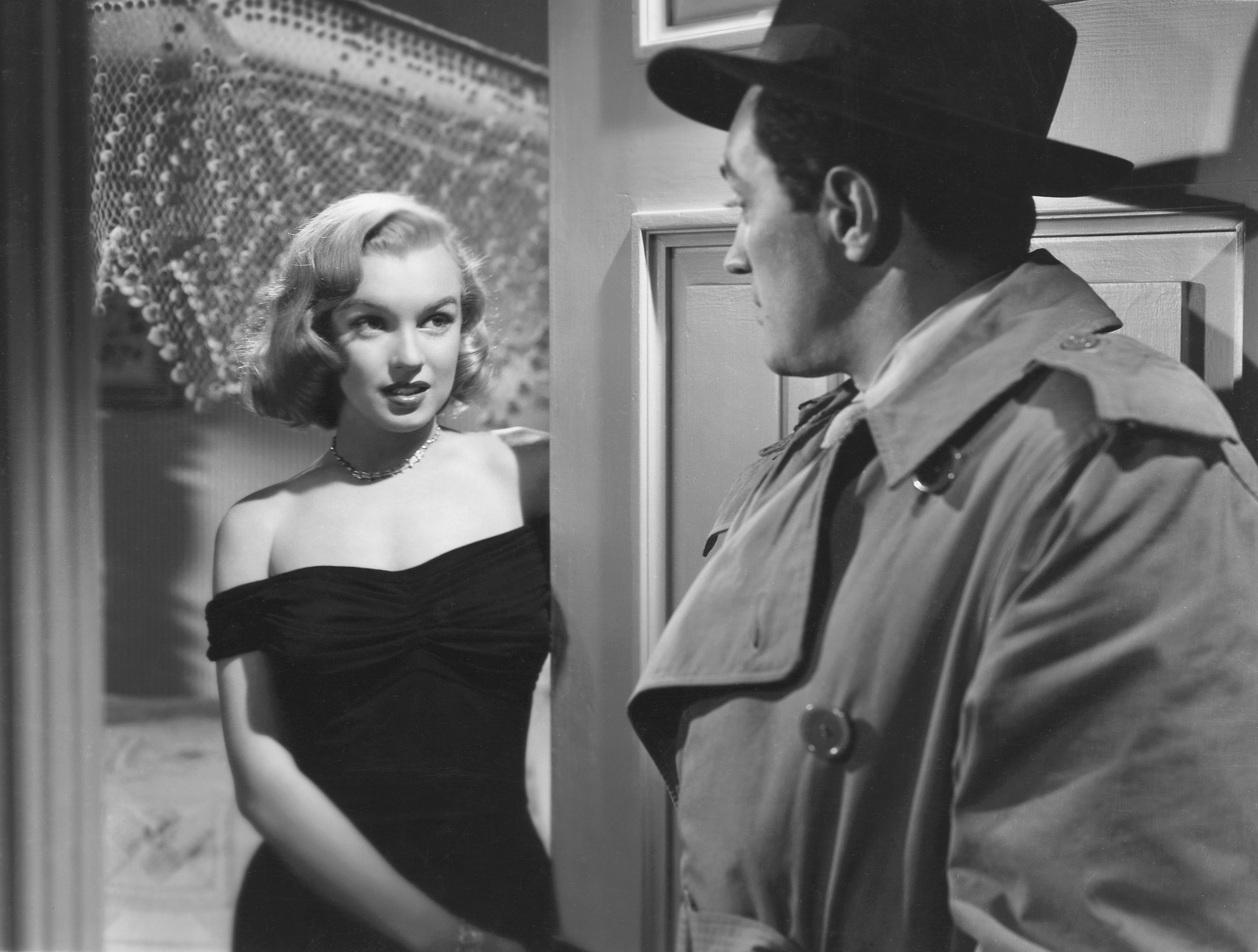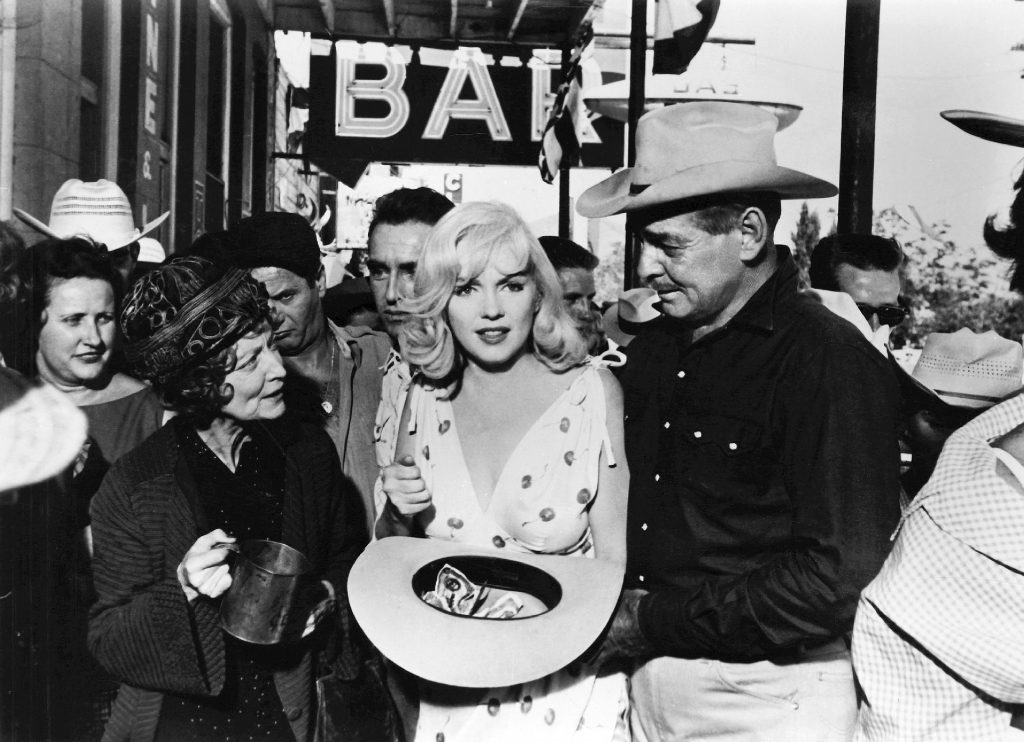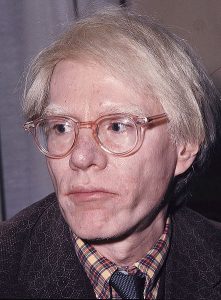Dear Diary: I’ve always been afraid of bees. Now I’m dreaming about them! Great big bumblebees with furry backs. I’m sure they are symbols for something and I am persevering to understand. They flew in a squadron across a meadow. I was hiding in the goldenrod, my feet bound in yellow silk like a Chinese whore’s.1
Her family knew her as Norma Jean Mortenson, a classic hometown girl born on June 1, 1926 in Los Angeles, California, but the world knew her by another name. Perhaps you’ve heard of her: Miss Marilyn Monroe. Never having known her father, Norma Jean was forced to grow up so that she could overcome the obstacles of living in an unstable household. Her mother, Gladys Baker, was incapable of taking care of Norma Jean due to her development of psychiatric problems that resulted in her admission into a mental institution. Unfortunately, this meant that her daughter would have to spend most of her childhood locked up in the confines of the American foster care system battling the inability to enjoy normal childhood experiences and defending herself against countless episodes of sexual assault. For Norma, there was really only one option for her to escape the tortures of her childhood. For this reason, at the age of sixteen, she got married to then-boyfriend Jimmy Dougherty on June 19, 1942. As a merchant marine, Dougherty was sent overseas, and to compensate for the absence of her new husband, Norma found employment as a worker in a nearby factory in Van Nuys, California. Little did she know that this decision would be the one that would change her life forever. While on the job, she managed to earn the attention of David Conover, a photographer sent to the factory by famed actor and army veteran, later President Ronald Reagan, who instructed Conover to capture images of “Women in War Work.” The publication of those pictures in the June 1945 issue of Yank Magazine served as the stepping stone for a life that not even Norma was unsure would play out in her favor; but given the lack of better alternatives, it was a step that she was more than willing to take. Luckily for her, the pictures proved to be a smashing success, and with that newfound fame, she colored her hair platinum blonde and changed her name to Marilyn Monroe.
With a change in direction came new changes in her life, and by the mid-1950’s Marilyn had rose to stardom, tackling top blockbuster films and capturing the attention and hearts of every man, woman, and child in America. In a 1973 biographical profile entitled Marilyn published by American Novelist, Norman Mailer, he depicted the blonde bombshell as being, on one hand, an “angel of sex,” while still possessing the abilities of being “gorgeous, forgiving, humorous, compliant and tender.” He continued by describing her as being an “angel of cinema” and a “presence” on stage.2 It is no surprise that like thousands of other Americans, Mailer was captured by the phenomenon that was Marilyn Monroe. Her charm and iconic good looks served as a distinctive perception of American ideals during this time, and Marilyn was well aware of the gravity of her impact in modeling and performing on the big screen. This is shown in how she often quotes that she “had belonged to the public and to the world” and “had never belonged to anyone else.”3 This realization of what her fame and recognition had brought her imposed a realization that with these opportunities came compromises, those of which would begin to take a serious toll on the American Sweetheart later in her career.
Due to her rapid increase in stardom, Monroe was persuaded to adapt to the changes that came with the life of a popular cultural icon and by doing so she decided to leave her past behind, divorcing her husband, and marrying baseball star Joe DiMaggio in 1954. While her fame came as a bit of a surprise, Monroe made it a priority to ensure that she did not neglect her priorities, and so she contributed as her part to the war effort, by volunteering at the United Service Organization, providing entertainment for soldiers overseas in Korea.4

In doing so, not only did her actions help to build her image, but it helped to showcase her numerous talents, which later proved useful in securing her a role in numerous films and magazine publications upon her return. She showcased her talents in movies such as Monkey Business, Gentlemen Prefer Blondes and How to Marry a Millionaire as well as the opportunity to grace the cover of Playboy magazine.5 Her involvement in the war guaranteed Monroe the opportunities that she had always dreamed about. Her identity remained conflicted between two different personas, “Monroe as a Celebrity,” with her famous blonde hair and hourglass figure, and “Monroe as the All-American Girl Back Home,” cherishing her fond memories of sweethearts, sisters, mothers, home-cooked meals, and any number of personal memories of life as a civilian.6 This battle between who she was portrayed to be and who she actually was proved to create quite a challenge for Monroe, who kept battling the need to be closer to who she actually wanted to be. Her instantaneous rise to stardom left Monroe in a position of complete loss and loneliness. An excerpt of Marilyn Monroe’s diary, from the period of shooting the iconic subway scene in Monkey Business, reveals her conflicting emotions during the height of her career, stating that,
I hate the way the bellboys walk by me, speaking in muffled tones. Sometimes I appear in the antique wooden mirror in the lobby: a maid, cleaning the glass in slow circles, notices a sad blonde in the reflection. Turning, she sees no one is there. Late at night in the hallways.7
While Marilyn tried to portray the lovable and beautiful woman that her fame endorsed, deep inside she was battling emotions that were quite the contrary to her character.
Due to this constant battle of emotions, Marilyn Monroe was forced to resort to various medications to control her frequent episodes of insomnia, depression, and bipolar disorder. Due to her constant traveling and increase in fame, Marilyn developed psychological conditions that deprived her of portraying the star that she was expected to be. For this reason, towards the end of her career, it was discovered that she had been prescribed drugs such as barbiturates, psychoactive drugs, and amphetamine to help her combat and control her condition. Unfortunately, on August 5, 1962, Marilyn Monroe was found dead in her home in Brentwood, Los Angeles, California. Later, toxicology reports had revealed that she had passed away from a drug overdose brought on by the consumption of barbiturates that had been prescribed to her mixed with lethal concentrations of other drugs such as pentobarbital and chloral hydrate.8 All these drugs mixed, creating a cocktail that would lead to the unfortunate death of one of America’s favorite superstars. While the circumstances of her death may still be up for debate, it is clear that the result of this case was no more than another tragic story of another Hollywood star who was overwhelmed by the realities of fame and fortune and took it upon herself to come up with a solution to rid her problems from the world.

Marilyn Monroe is one of the most iconic women in American History, but her story is almost forgotten. Even though she may be considered one of the most photographed women ever, having both her personal and professional life turned into a highly dramatic narrative over the period of her career, her life as an adored and idolized superstar proved to be nothing but a rollercoaster, transforming her dreams of being a successful Hollywood star and escaping her childhood misfortunes into living a lie that was worse than she had imagined. While Marilyn Monroe remains an important figure in the eyes of the American public, it is important to note that her success came at a great expense, costing her her life and her happiness. A simple girl from Los Angeles California had the dreams of making it big in Hollywood, living the life of the rich and famous, but little did she know that the place she had always fantasized would be the farthest thing from what she had imagined. This was the story of that simple “All-American Home Girl” Norma Jean, but the world would rather call her by her true name, Miss Marilyn Monroe.
- Dale M. Kushner, “From the Diaries of Marilyn Monroe: The Miller Years,” Confrontation no. 101 (2008): 264. ↵
- Maggie McKinley, “Exploring the mystery of Marilyn,” The Mailer Review no. 1 (2013): 409. ↵
- Maggie McKinley, “Exploring the mystery of Marilyn,” The Mailer Review no. 1 (2013): 408-409. ↵
- Kristi Good, “Marilyn Monroe: Soldier in Greasepaint,” Theatre History Studies (2014): 211-213. ↵
- Kristi Good, “Marilyn Monroe: Soldier in Greasepaint,” Theatre History Studies (2014): 214. ↵
- Kristi Good, “Marilyn Monroe: Soldier in Greasepaint,” Theatre History Studies (2014): 222. ↵
- Bill Meissner, “The Ghost of Marilyn Monroe Speaks in the Hollywood Roosevelt Hotel,” Atlanta Review no. 1 (2010): 55. ↵
- M. De Entrambasaguas, “Insomnia and Death of Marilyn Monroe,” Sleep Medicine vol. 14 (2013): 16. ↵



75 comments
Grace Bell
This article gave me a deeper insight into Marilyn Monroe’s life and what she was feeling and doing. I feel as though many people can relate to the loneliness she felt for that long period of time, and how many people resort to taking medications to solve their problems when there are so many other ways to help depression and anxiety. The article was very well written and I feel very well informed, good job!
Justin Garcia
This is a interesting article. I knew very little about Marilyn Monroe other than her being an actress. This article informed me about the many different sides of her. The article also give good insight to the sudden rise to fame that she encountered. The article was also well written with a clear focus on what your main idea was. That being the life of actress Marilyn Monroe.
Josselyn Arrieta-Meraz
While reading this article I had many mixed emotions, from the beginning of Marilyn’s childhood she was brought by torment and obstacles. After hitting this amazing opportunity she got to a point where she was overwhelmed. While many may think that fame may be the solution to all their problems, her story serves as an example as to why they are completely wrong. Money and fame isn’t everything, and sadly sometimes it takes stories like such to comprehend this issue. Marilyn Monroe is that girl you grow up hearing about no matter how old you are she is an iconic figure to American history, and will always be remembered as one.
Carlos Aparicio
My grandparents would talk about Marilyn Monroe but I never knew that her real name was Norma Jean Mortenson. This article gives exact detail on the rise of fame that Monroe attributed. It really is amazing how she blew up her fame from becoming a foster kid to becoming Americas superstar. The tragedy of her death still continues to this day due to the fact that today’s superstars take many medications without the doctors permission, leading to the drug overdoses.
Deanna Lummus
I find this story very sad but yet inspiring. She seemed to be very independent which is something I strive to be. However, there are always limits. There is always a time and a place. I think that building her career is something she had some luck and help with but it was mainly her. I think the key to true happiness is being surrounded by people you love and who love you right back. Unfortunately she received the wrong kind of love, fame. It is hard to separate the two but I think if she had, then she would have been much happier and lived a lot longer. Truly a gem and lost too soon.
Troy Leonard
although, everyone knows the name Marilyn Monroe and if you see a picture of her everyone can tell you who it is but I don’t think people really knew what she was going through. I would have never guessed that she suffered form depression because she was always lookin so happy in her pictures. you did a great job on giving us insight on her life because you never know what kind of feelings a smile is hiding.
Ernie Sano
This article does a fantastic job at humanizing a figure that is often seen in a light that is either highly negative or positive. The controversial icon has often been a staple for an example of right and wrong, yet we forget that she is simply a person. People are given their own lives and experiences that make up who they are and that is an aspect of life that should not be taken away just because Marilyn Monroe is a celebrity.
Richard Navarro
Crazy to read that Ms. Monroe actually came from the bottom. She was a worker during war, luckily she was able to escape that due to her beauty. It’s amazing how some things happen like that. Who would know that she came from a working plant all because of a photographer sent to do his job.
I wonder why she chose the name Marilyn Monroe after all, like what actually drove her to do it. I would have liked to see an interview from her before the fame and an interview after just to see how much the fame and fortune changed her if it did. Very cool article.
Alejandra Chavez
I have always adored this woman. I was aware she was an actress but I didn’t know she had done oh so much more. I always looked up to her because of the level of confidence with her unique beauty mark and turning it into an iconic characteristic. I had also read that she was considered to be ahead of her times when, at the height of racial segregation, she helped out Ella Fitzgerald by demanding a club owner to let her perform in exchange for Monroe’s presence. Rather than just being a pretty face, she decided to give back to her nation by distracting soldiers of the very sad and mentally scarring scenes of war through providing them with entertainment. From a personal aspect through experience, I understand how difficult it must have been for her growing up in the foster care system. I also understand how difficult is it to get a quality education so I admire how (although this crucial part of information was not depicted in the article) she didn’t let her childhood determine her future; she always on a constant mission to better her mind. A more significant marriage than the one she shared with Joe DiMaggio, she married Arthur Miller and threw herself into books which resulted her personal library to contain over 400 of them. I find it very saddening to learn that she was also another amazing soul lost to drug over doses.
Edith De Loera
This article portrayed Marilyn Monroe as someone other than America’s famous platinum-blonde, pothole flying skirt model! It was very informative and taught me about her past. I was completely taken back by her tough upbringing. I always sort of thought of her as the girl next door type, but I found out I was wrong. It just proves how even the most glamorous and adored have their struggles.